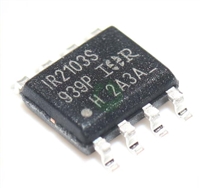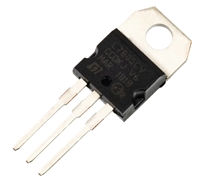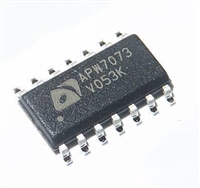Philips Semiconductors
Product specification
80C51 8-bit microcontroller family
8K/256 OTP/ROM/ROMless, 4 comparator, failure detect circuitry, watchdog timer
80C575/83C575/
87C575
The address of the EPROM location to be
Program Verification
EPROM CHARACTERISTICS
If security bit 2 has not been programmed,
the on-chip program memory can be read out
for program verification. The address of the
program memory locations to be read is
applied to ports 1 and 2 as shown in
Figure 36. The other pins are held at the
‘Verify Code Data’ levels indicated in Table 3.
The contents of the address location will be
emitted on port 0. External pull-ups are
required on port 0 for this operation.
programmed is applied to ports 1 and 2, as
shown in Figure 34. The code byte to be
programmed into that location is applied to
port 0. RST, PSEN and pins of ports 2 and 3
specified in Table 3 are held at the ‘Program
Code Data’ levels indicated in Table 3. The
ALE/PROG is pulsed low 25 times as shown
in Figure 35.
To put the 87C575 in the EPROM
programming mode, PSEN must be held high
during power up, then driven low with reset
active. The 87C575 is programmed by using
a modified Quick-Pulse Programming
algorithm. It differs from older methods in the
value used for V (programming supply
PP
voltage) and in the width and number of the
ALE/PROG pulses.
To program the encryption table, repeat the
25 pulse programming sequence for
addresses 0 through 1FH, using the ‘Pgm
Encryption Table’ levels. Do not forget that
after the encryption table is programmed,
verification cycles will produce only encrypted
data.
The 87C575 contains two signature bytes
that can be read and used by an EPROM
programming system to identify the device.
The signature bytes identify the device as an
87C575 manufactured by Philips.
If the encryption table has been programmed,
the data presented at port 0 will be the
exclusive NOR of the program byte with one
of the encryption bytes. The user will have to
know the encryption table contents in order to
correctly decode the verification data. The
encryption table itself cannot be read out.
Table 3 shows the logic levels for reading the
signature byte, and for programming the
program memory, the encryption table, and
the security bits. The circuit configuration and
waveforms for quick-pulse programming are
shown in Figures 34 and 35. Figure 36 shows
the circuit configuration for normal program
memory verification.
To program the security bits, repeat the 25
pulse programming sequence using the ‘Pgm
Security Bit’ levels. After one security bit is
programmed, further programming of the
code memory and encryption table is
disabled. However, the other security bit can
still be programmed.
Reading the Signature Bytes
The signature bytes are read by the same
procedure as a normal verification of
locations 030H and 031H, except that P3.6
and P3.7 need to be pulled to a logic low. The
values are:
(030H) = 15H indicates manufactured by
Philips
(B0H) = 97H indicates 87C575
Note that the EA/V pin must not be allowed
PP
Quick-Pulse Programming
to go above the maximum specified V level
PP
The setup for microcontroller quick-pulse
programming is shown in Figure 34. Note that
the 87C575 is running with a 4 to 6MHz
oscillator. The reason the oscillator needs to
be running is that the device is executing
internal address and program data transfers.
for any amount of time. Even a narrow glitch
above that voltage can cause permanent
damage to the device. The V source
PP
Program/Verify Algorithms
Any algorithm in agreement with the
conditions listed in Table 3, and which
satisfies the timing specifications, is suitable.
should be well regulated and free of glitches
and overshoot.
Table 3.
EPROM Programming Modes
MODE
RST
PSEN
ALE/PROG
EA/V
P2.7
P2.6
P3.7
P3.6
PP
Read signature
0
0
0
0
0
0
0
0
0
0
0
0
1
1
0
1
0
1
1
1
0
0
0
0
1
1
0
1
1
1
1
0
0
1
1
0
1
0
Program code data
Verify code data
0*
1
V
PP
1
Pgm encryption table
Pgm security bit 1
0*
0*
0*
V
PP
PP
PP
V
V
Pgm security bit 2
NOTES:
1. ‘0’ = Valid low for that pin, ‘1’ = valid high for that pin.
2. V = 12.75V ±0.25V.
PP
3. V = 5V±10% during programming and verification.
CC
*
ALE/PROG receives 25 programming pulses while V is held at 12.75V. Each programming pulse is low for 100µs (±10µs) and high for a
PP
minimum of 10µs.
Trademark phrase of Intel Corporation.
34
1998 May 01










 深入解读IR2103资料手册:引脚说明、电气参数及替换型号推荐
深入解读IR2103资料手册:引脚说明、电气参数及替换型号推荐

 L7805CV手册解读:引脚说明、替代型号推荐、好坏检测
L7805CV手册解读:引脚说明、替代型号推荐、好坏检测

 MMBT5551资料手册解读:电气参数、替换型号推荐
MMBT5551资料手册解读:电气参数、替换型号推荐

 APW7073资料手册解读:产品特性、引脚说明、替换型号推荐
APW7073资料手册解读:产品特性、引脚说明、替换型号推荐
